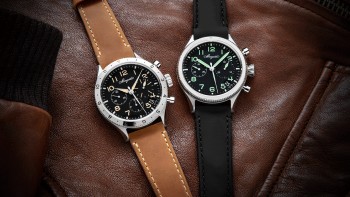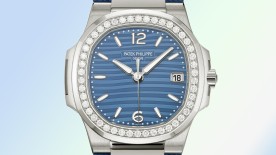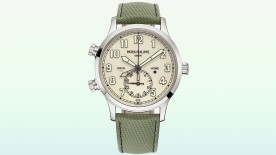Since the launch of Breguet’s new Type XX chronographs in Paris this summer, most of the journalistic focus has been on the aesthetics of these two new timepieces and the historical link between Breguet and the world of aviation. But there is another sub-plot in this wonderful story and that is the creation of two new movements that took four years of research and development to create.
Like with most new movements, they aren’t drawn up in a few months, they take years to perfect, and in the case of the Calibre 728 (the civilian version that includes a flyback chronograph with central chronograph seconds, a 15-minute counter, a 12-hour counter, and a date) and the Calibre 7281 (the military version with a flyback chronograph with central chronograph seconds, 30-minute counter, small seconds, and date), it took four whole years to perfect these movements.
The first question for Breguet’s constructors and engineers was whether they should use an existing calibre or start over with a clean sheet of paper. They decided to start from zero to create two new movements that would have a fixed diameter and height but would also be robust and modern so that they could power timepieces for years to come. The Breguet development team was able to use pre-existing experience and knowledge from its current stable of movements, but each and every function, operation, and moving part was studied to create the finest flyback chronograph movements possible. Let’s take a look at the results that include a host of improvements.

Robustness
The first criterion was to have robust movements, but not just in terms of their capacity to survive shocks, but also in terms of their reliability. Thanks to a high frequency of 5Hz, the balance wheel functions at a higher speed, which in turn has a positive influence on the stability of the hairspring, therefore reducing the effects of outside influences on the movement and increasing its timekeeping precision.
The choice of materials also plays a role in the robustness of a movement. In both the calibres 728 and 7281, the hairsprings and escapement wheels come in silicon. As silicon components are anti-magnetic, they guarantee constant precision. Add to this the fact that they do not deform or corrode, and have a good isochronism, they further increase precision and durability.
Continuing on the topic of robustness, the balance has a traversing bridge that is attached on both sides, allowing the movement to absorb micro shocks on a daily basis without the loss of precision. There is also another detail on this bridge where there is a zone that can be adjusted via a bolt, allowing the watchmaker to fine-tune the position of the bridge, yet again improving the precision of the movement. And if all this wasn’t impressive enough, there is a power reserve of 60-hours, which is particularly rare for a chronograph movement.

The Flyback Chronograph
The flyback chronograph allows the wearer to start the chronograph and then stop, set, and re-start it again with one single push on the pusher. Without this function, the wearer would have to stop the chronograph, reset it to zero, and then restart it again, requiring three separate pushes. The flyback chronograph was extremely useful for pilots who needed to do rapid calculations while in the air with their gloves on. These new movements work using a column wheel and vertical clutch system that avoids any unexpected jumping of the hands that often occurs with other types of systems. Breguet spent a considerable amount of time on these components alone so that they would work perfectly and deliver the smoothest chronograph experience.
One of the tricky functions of a chronograph is to instantaneously send all the hands back to zero when re-setting. This action works via the column wheel, but Breguet has taken things one step further by developing a mechanism that creates a constant force for the reset function with a rigid locker that holds the system in place. When the pusher is pressed, it winds a spring, then the rigid locker unlocks the reset system, and the spring releases the energy to the reset system and all the hands instantaneously return to their initial position.
Even if the inspiration behind the new Breguet Type XX comes from the rich history of the brand, all these improvements show how Breguet’s movements are constantly being reinvented thanks to new technology, new know-how, new tools, and new materials that historically weren’t available, but today are providing the best timekeeping experience possible for Breguet’s clients.








